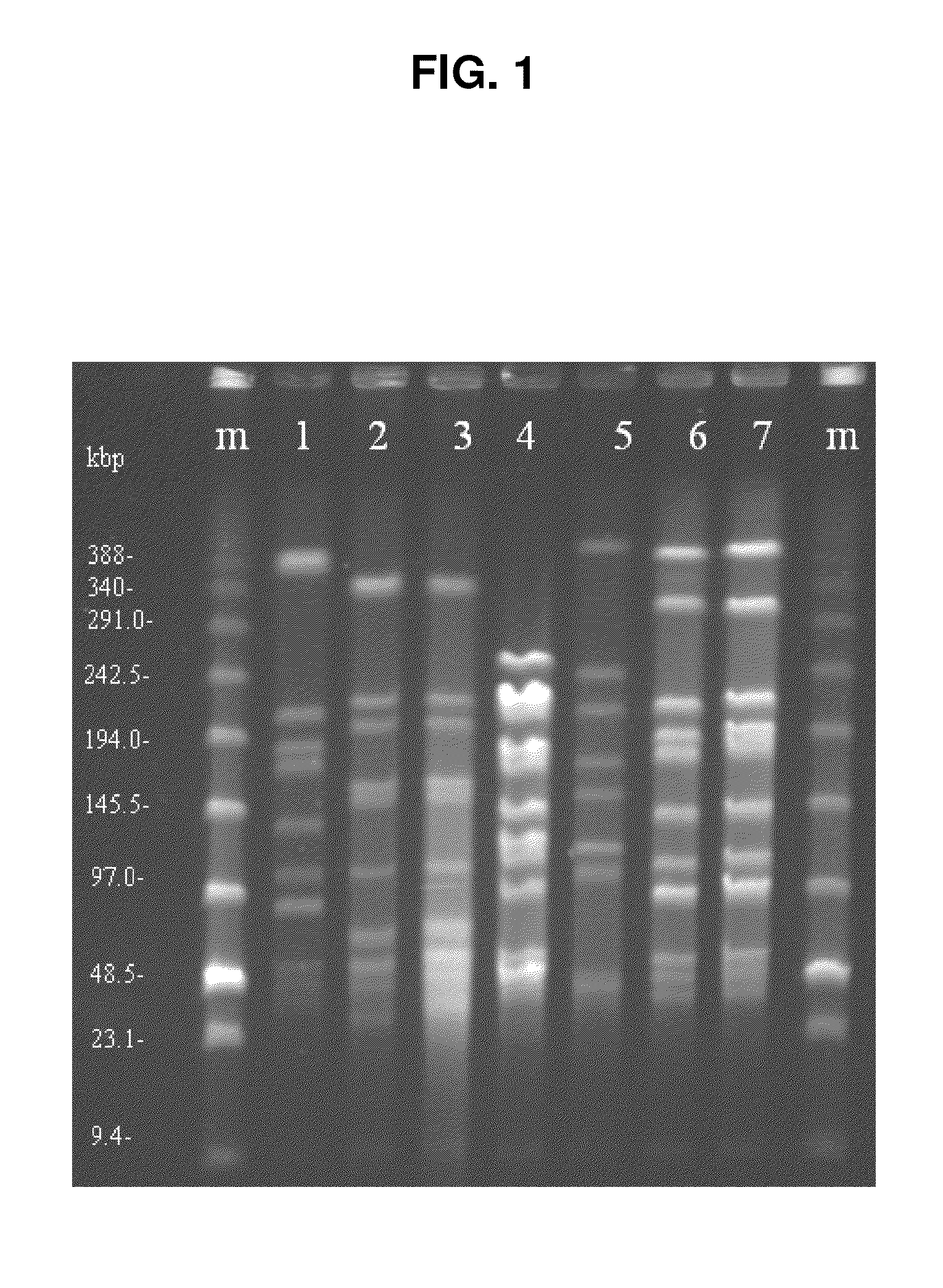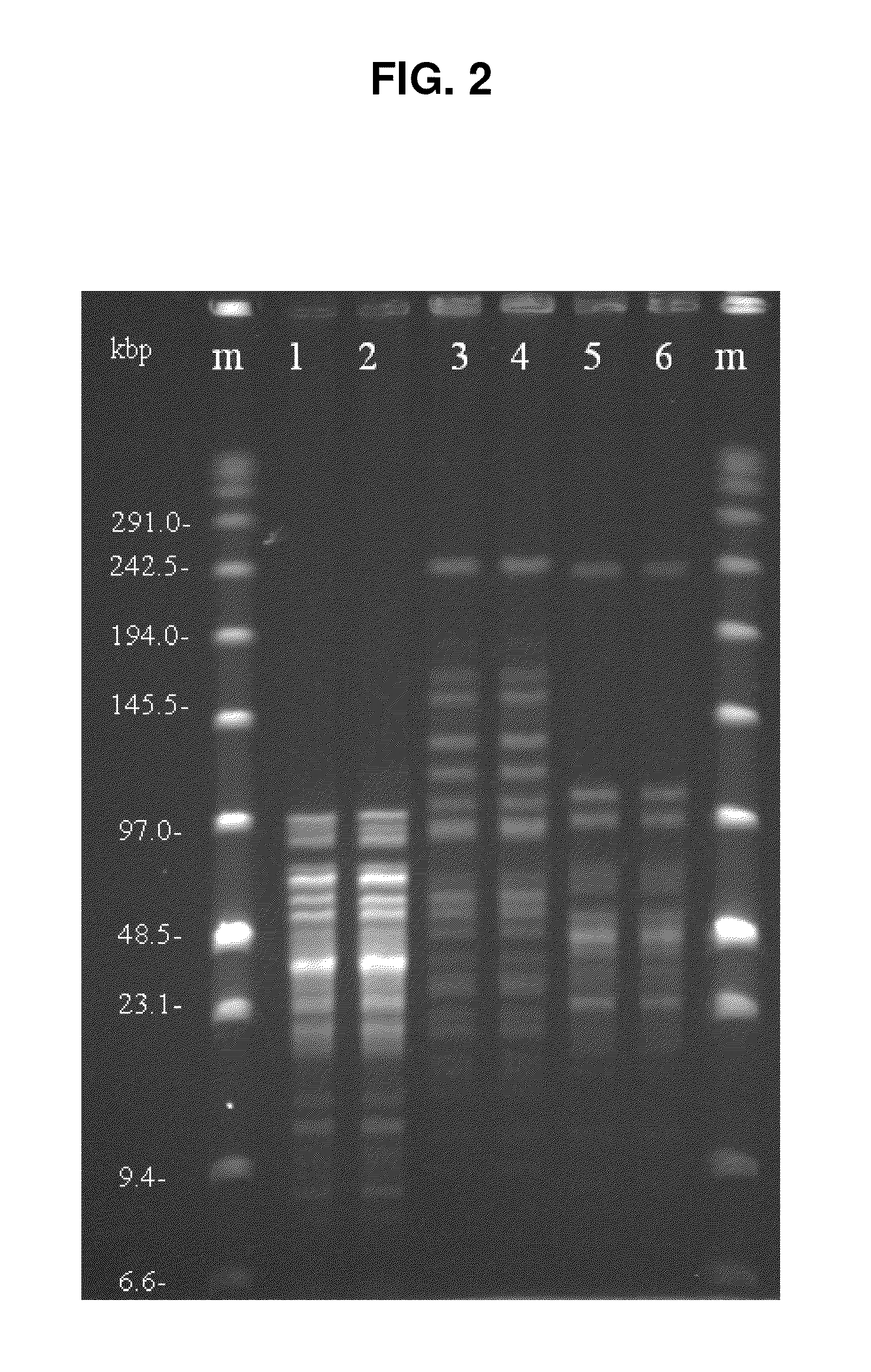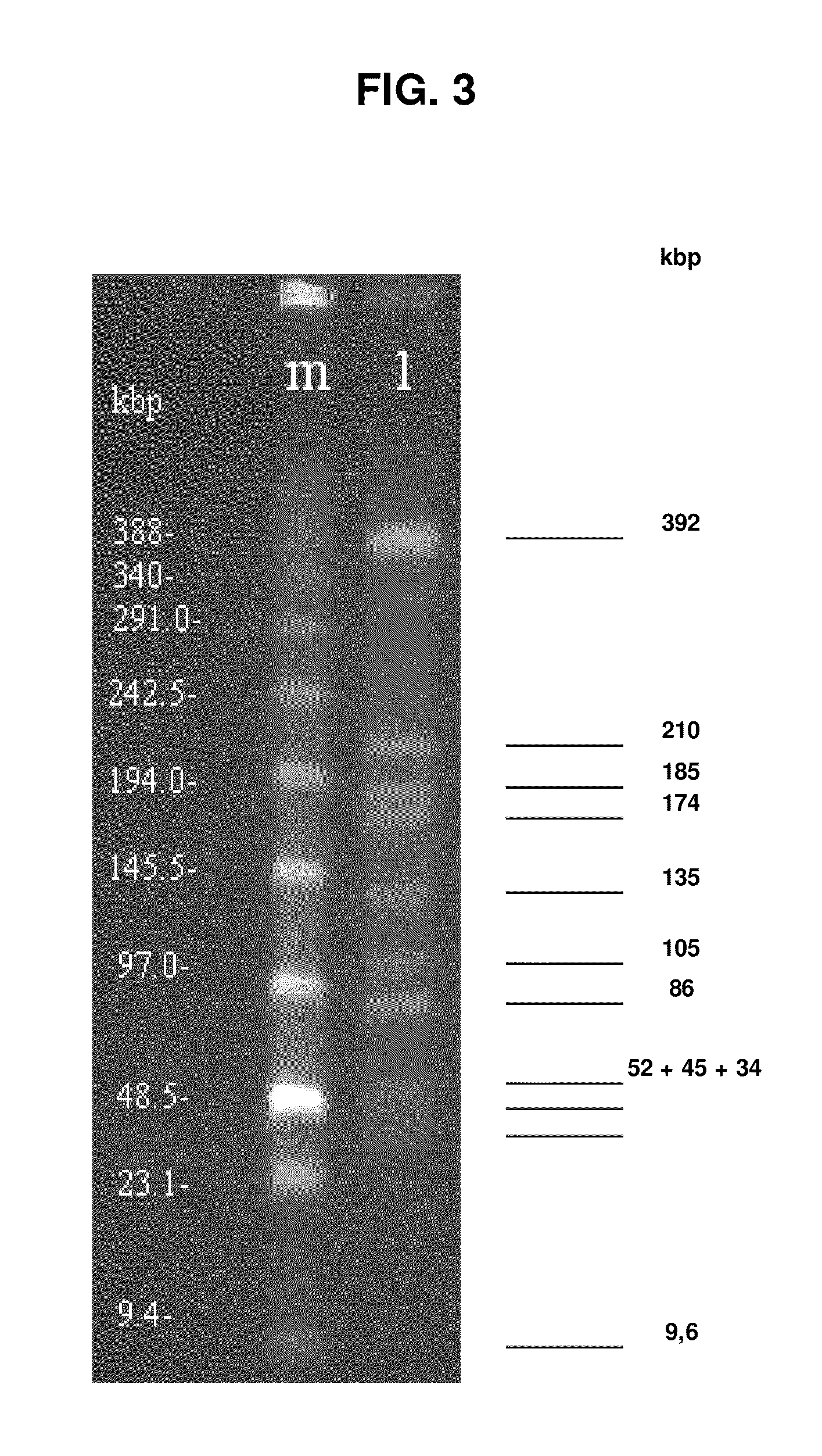Probiotics for dietary dairy product
a technology for dairy products and probiotics, applied in biochemistry apparatus and processes, food preservation, food preparation, etc., can solve the problems of mutating microorganisms and stunting their growth, and achieve the effect of enhancing their viability
- Summary
- Abstract
- Description
- Claims
- Application Information
AI Technical Summary
Benefits of technology
Problems solved by technology
Method used
Image
Examples
example 1
Characterization of the Probiotic Association
[0088]All analyses with regard to the species and strain composition of the association of probiotic microorganisms, whose results are discussed below, have been carried out in the DNA Analysis Lab of ELBI Bulgaricum EAD, Sofia, Bulgaria. Tests have been carried out for two samples identified formally as IN1 and IS1.
[0089]Establishing species composition. Species affiliation of the rods contained in the probiotic association of microorganisms, isolated from spring water from a source in Mountain Stara Planina, has been established through the ARDRA method (amplified ribosomal DNA restriction analysis) following Giraffa et al., J. Appl. Microbiol. 1998, 85, 918-924. The species affiliation of the cocci forms in the same probiotic association has been established by the species- / genus-specific PCR following Lick et al., System. Appl. Microbio. 1996, 19, 74-77, Nomura et al., Appl. Eviron. Microbiol. 2002, 68(5), 2209-2213, and Ke et al., J....
example 2
Proving the Water Origin of the Association
[0097]In order to exclude contamination from sources near to the springs, parallel studies of the microbial content were conducted of the samples isolated from the moss on the tree which is four metres away (Sample P1), from the grass next to the spring (Sample P2) and the underwater algae in the spring (Sample P3) in September 2011.
[0098]The methods for establishing the number of lactic acid bacteria, the species and strain composition of the samples, are identical to the methods used in analysing sample IN1 as in Example 1.
[0099]Species composition of samples P1, P2 and P3. The species composition of the different samples and their numbers per type of microorganisms are shown in Table 2. Within the cocci group the samples have been found to contain Enterococcus sp. and Streptococcus thermophilus, from the lactobacilli—only Lactobacillus delbrueckii ssp. lactis. Lactobacillus delbrueckii ssp. bulgaricus or Lactobacillus helveticus have not...
example 3
Obtaining a Dietary Dairy Product Containing a Probiotic Association
[0103]In order to obtain a dietary dairy product with a starter culture containing the probiotic association detailed in Examples 1 and 2 above, the microorganisms isolated from the spring water are captured and multiplied with a view of obtaining biomass. For this purpose 1.0 litre regular and pasteurized cow's milk with 3.6% fat was cultured with 0.5 litre water taken directly from the spring. A container with the milk and the spring water was placed in a water jacket at temperatures of 43° C. for 40 hours, at the end of which period white soft-textured biomass was released onto the surface. During fermentation, the microorganisms absorb lactose creating an envelope glycoprotein shell. This shell allows the microorganisms to remain viable after exposure to extreme conditions. Also, this shell extends the shelf-life of products containing these microorganisms.
PUM
| Property | Measurement | Unit |
|---|---|---|
| Time | aaaaa | aaaaa |
| Time | aaaaa | aaaaa |
| Time | aaaaa | aaaaa |
Abstract
Description
Claims
Application Information
 Login to View More
Login to View More - R&D
- Intellectual Property
- Life Sciences
- Materials
- Tech Scout
- Unparalleled Data Quality
- Higher Quality Content
- 60% Fewer Hallucinations
Browse by: Latest US Patents, China's latest patents, Technical Efficacy Thesaurus, Application Domain, Technology Topic, Popular Technical Reports.
© 2025 PatSnap. All rights reserved.Legal|Privacy policy|Modern Slavery Act Transparency Statement|Sitemap|About US| Contact US: help@patsnap.com



